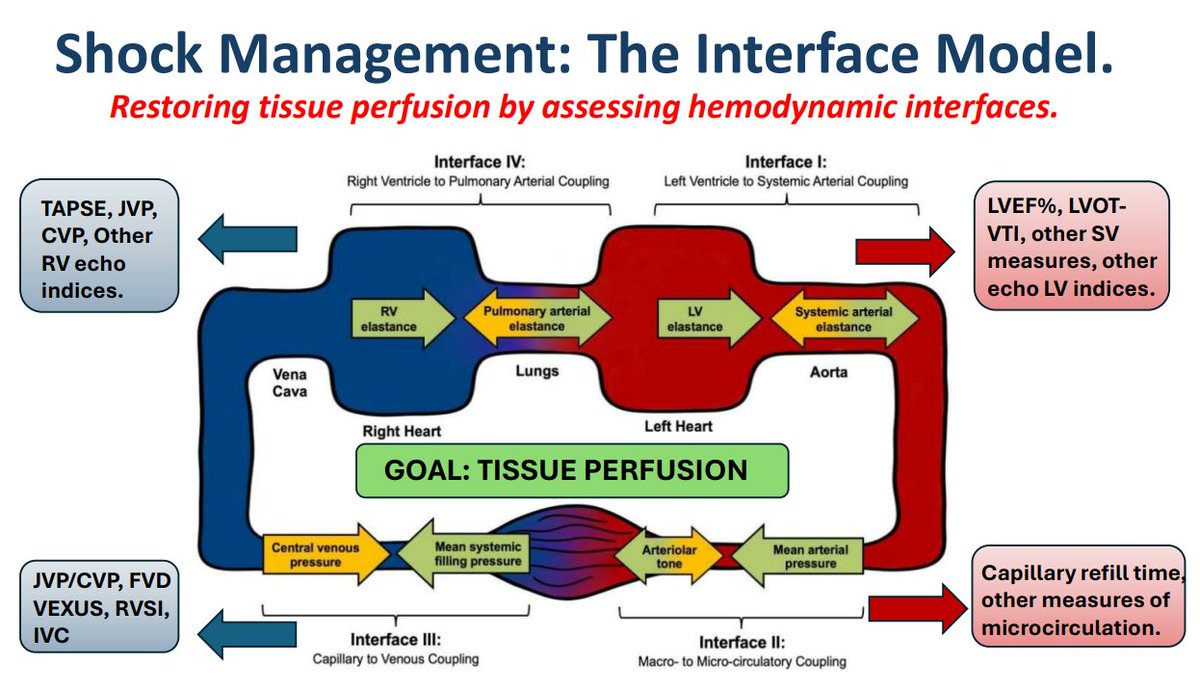Case and images Marta Malkiewicz
A 30 year old man from Indonesia who has been in Australia for 7 years presents with shortness of breath and cough.
History
- Shortness of breath for 1 week
- Occasional central chest pain not pleuritic in nature
- Productive cough , yellow sputum, no haemoptysis
- 5 kg weight loss in 3 months
- Intermittent fevers for a number of weeks at home
On examination
- Afebrile
- BP 130/87
- HR 138/min
- Sats 96% on RA
- Increased work of breathing
- Good AE bilaterally
- Right supraclavicular lymphadenopathy
Xray shows bilateral lower lobe consolidation with bilateral pleural effusions.
A point of care ECHO is performed
PLAX
It is important to increase the depth when assessing a pericardial effusion to look for a concomitant pleural effusion. In this view both a very large pericardial effusion is visible as well as a pleural effusion.
PLAX depth reduced
There is free right ventricular wall collapse and some LA free wall collapse. The pericardium is thickened with frond like projections.
PSAX at the level of the papillary muscles.
It is difficult to assess LV function properly due to the irregular rapid heart rate (atrial flutter). In this view the pericardial effusion appears to be loculated with fibrin spanning the pericardial sac.
4CV
There is RV free wall collapse and interventricular interdependence as seen by the movement of the interventricular septum. Again it is difficult to properly evaluate LV function because of the tachycardia, however LV function appears impaired.
Subcostal view
The heart is swinging within the pericardial sac.
RUQ
There is a large right sided pleural effusion.
LUQ
There is a large left sided pleural effusion.

Progress
150 mls of haemoserous fluid was drained from the pericardial sac and sent for biochemistry, culture, AFB,TB PCR and cytology and a drain was left in situ. In total 750 was drained over 24 hours.
He was covered with antibiotics whilst the drain was in situ and amiodarone was started for his atrial flutter. Amiodarone was ceased 3 days later as he had reverted to sinus rhythm.
A progress transthoracic echo 24 hours after admission showed moderate to severe LV dysfunction. He was started on carvidelol and anticoagulated. A repeat transthoracic echo performed 2 weeks later showed normal LV function. Carvidelol was stopped.
A CT showed enlarged necrotic mediastinal and hilar lymph nodes, a loculated pericardial effusion, pleural effusions and bilateral lower lobe consolidations, scattered bilateral nodularity within both lung apices and the right lower lobe with associated tree in bud opacifications suggestive of TB.
A biopsy of the right supraclavicular node was diagnostic for TB.
Pericardial fluid was initially negative for culture but positive for TB PCR after culture.
The patient was started on quadruple therapy for TB and made a good ongoing recovery.
Discussion
In 2023, an estimated 10.8 million people fell ill with TB worldwide, including 6.0 million men, 3.6 million women and 1.3 million children according to the World Health Organisation.
Pericarditis occurs in about 1-2% of TB patients in endemic countries and is the leading cause of pericardial effusion in those areas. It is a serious complication of tuberculosis that is difficult to diagnose, often leading to delayed detection. One of the serious complications of TB pericarditis with effusion is constrictive pericarditis which occurs in 30 -60% of cases as a late complication and has a poor prognosis. Treatment options include chemotherapy and pericardiectomy (3) Whilst in Australia the leading cause of pericardial effusion is cancer, in endemic countries where there is TB, TB is the leading cause of pericardial effusion.
WHO: Estimated TB incidence in the world 2020
TB pericarditis typically develops with nonspecific symptoms such as fever, weight loss, and fatigue, along with chest pain, cough, and dyspnea. The severe acute-onset pericardial pain characteristic of idiopathic pericarditis is rare. This was evident in our patient.
TB usually affects the pericardium by retrograde lymphatic spread from the peritracheal, peri bronchial, or mediastinal lymph nodes or by hematogenous spread of a primary TB infection and is rarely affected by contiguous spread of a tuberculous lesion in the lung or hematogenous spread of a distant focus (3) Pericarditis can also appear as an isolated extrapulmonary form.
References
- TB pericarditis: Up To Date
- World J Clin Cases. 2022 Feb 26;10(6):1869–1875. doi: 10.12998/wjcc.v10.i6.1869 Tuberculous pericarditis-a silent and challenging disease: A case report Oscar David Lucero 1,
- Tuberculous Pericarditis Bongani M. Mayosi, CirculationVolume 112, Number 23 https://doi.org/10.1161/CIRCULATIONAHA.105.543066
- Indian Journal of Tuberculosis Volume 69, Issue 2, April 2022, Pages 220-226Demographic, clinical and etiological profile of pericardial effusion in India: A single centre experience
- Incidence of TB in asia pacific region Lau, L.H.W., Wong, N.S., Leung, C.C. et al. Seasonality of tuberculosis in intermediate endemicity setting dominated by reactivation diseases in Hong Kong. Sci Rep 11, 20259 (2021). https://doi.org/10.1038/s41598-021-99651-9
- Int J Circumpolar Health. 2022 Apr 26;81(1):2069220. doi: 10.1080/22423982.2022.2069220 Tuberculosis in Greenland – Time from first contact to diagnosis and treatment
Jens Lind Gleerup a












